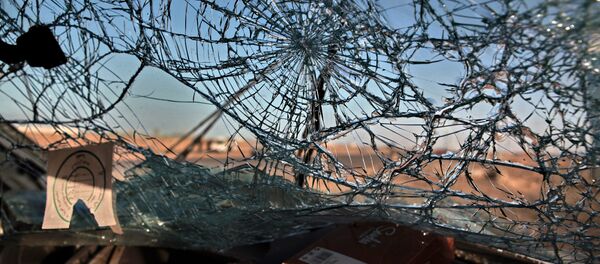The Islamic State claimed responsibility for a suicide bomb attack on May 31 outside the city of Misrata which killed five and wounded eight, one of a series of attacks in the Misrata area carried out by the group in recent months. Misrata, 200 km east of Tripoli, is allied with the unofficial government which sits in the General National Council [GNC], the country's former parliament under Gaddafi.
As well as the attacks around Misrata, at the end of May the Islamic State seized the city of Sirte, and the Great Man Made River network, the world's largest irrigation project which supplies Libyan cities with fresh water. The water project was the base for another militia, Battalion 166, also loyal to the Tripoli-based government.
The Islamic State first captured areas of the eastern Libyan coastal city of Derna in October last year; last month it was reported that the group has full control of the town, and is carrying out assaults on the towns of Harawa and Nufaliya, east of Sirte.
After the capture of territory in Sirte, the rival Libyan national administration based in Tobruk, which is recognized by the UN, carried out air strikes and ground offensives. In February, following the beheading by the Islamic State of 21 Coptic Christians from Egypt, the Egyptian Air Force also responded with air strikes against positions held by the Islamic State.
According to a report from the Swiss Le Temps newspaper on Saturday, the city of Misrata, the site of a bloody siege by Libyan troops in 2011 during which more than 1,000 people died, is again under pressure, now from a multitude of groups vying for control of Libya amid the county's civil war.
"We are surrounded by wolves," said one local, while another, a local businessman said, "Misrata is the Libyan city which has suffered the most," adding that "we can't just throw away the revolution."
An analysis published in January by Brian McQuinn, co-author of 'The Libyan Revolution and its Aftermath,' warned that in Misrata alone, "near the end of the 2011 revolution, there were 236 fighting groups operating," each with its own command structure and identity, ranging in size from nine to 1,727 fighters.
"Thanks to the densely networked and relationship-based makeup of Libya’s different political groups, the violence there is almost exclusively fuelled by local, not national, concerns."
Consequently, warned McQuinn, the idea perpetuated in the western media of a two-sided conflict in Libya is a fiction, as is the idea of a straightforward two-sided conflict between anti-Islamists and religious extremists.




